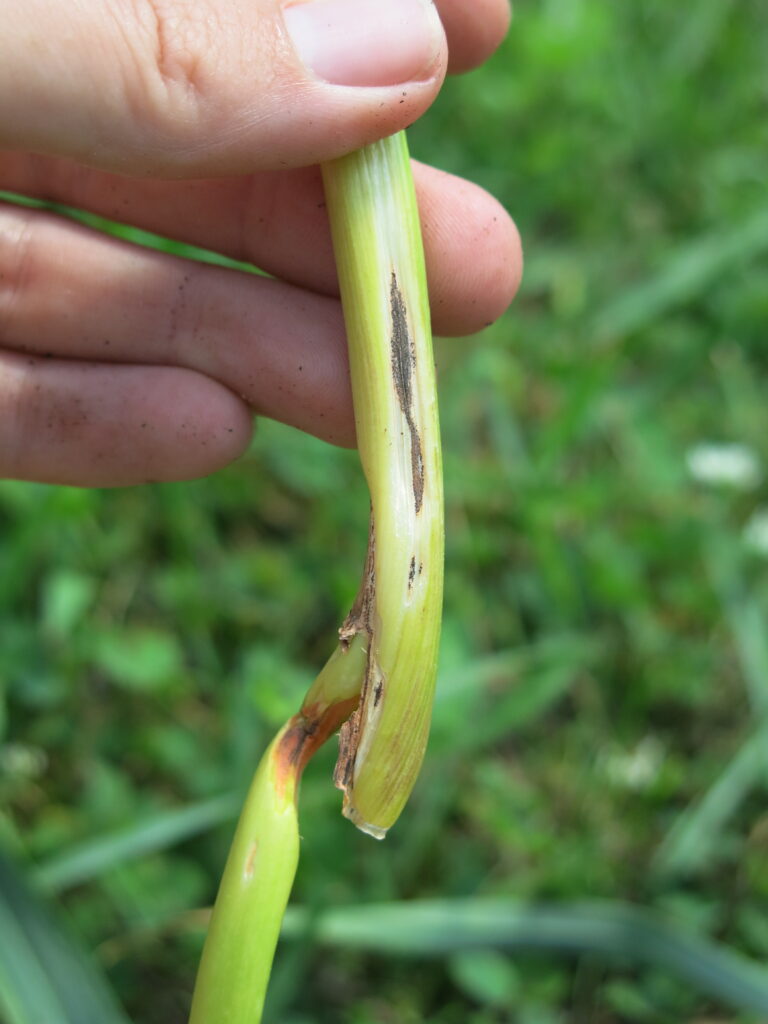
Pest: Anthracnose (Colletotrichum fioriniae)
Pest/disease identification and lifecycle, most common damage symptoms and crops affected:

The fungus pathogen that is responsible for anthracnose on garlic scapes (Colletotrichum fioriniae), is the same fungus that causes celery anthracnose — described in this pest report from 2019. One theory for the relatively recent appearance of the disease is that it is spreading from celery crop debris to garlic. However, the fungus can potentially infect several crops including cherry tomatoes, blueberries and strawberries, and it can infect many common weeds like lambsquarters, pigweed, nutsedge, oakleaf goosefoot, groundsel and even poison ivy. Before we celebrate any possibility that it will inhibit weeds, make note that it can infect them asymptomatically.
When infecting garlic, anthracnose first appears as tan sunken lesions up to an inch long, which then turn orange as the fungus produces spores. Apparently some growers in New York state refer to it as “orange fuzzy scape” though it’s been noted that the sporulation is more gooey than fuzzy. Twelve hours of wetness is thought to be required for the fungus to successfully infect the plant, but longer periods of freely available water may allow a larger outbreak.
It is thought that only scapes and bulbils will usually show signs of infection, so spread by seed cloves is unlikely, though anyone propagating garlic by bulbil should take this disease into consideration.
Management options:
Because the disease primarily affects scapes, economic damage to the bulb crop is unlikely. However, the disease can survive on crop debris in the soil for several years, so it is most likely worth removing infected scapes from the field as part of your regular de-scaping. Similarly, if you grow celery, you should probably be checking for this disease and considering a copper fungicide and/or bio-fungicide plan to protect your celery from infection. It is not yet clear how easily the disease moves from garlic to celery, or vice versa, but it is probably best to plan on long rotations between the two crops, when possible. See this brief write-up from Meg McGrath, Cornell Cooperative Extension, for more information and some vibrant orange fungi photos.
